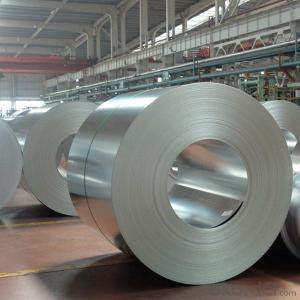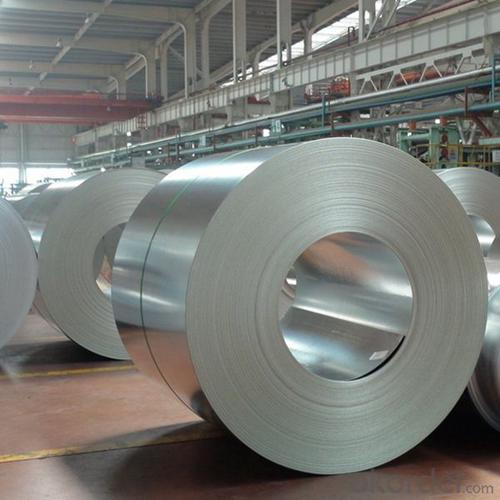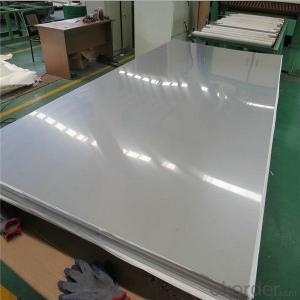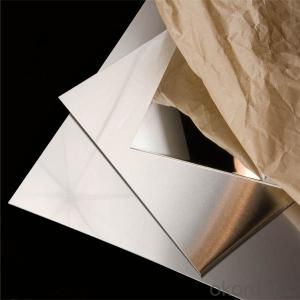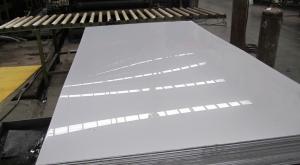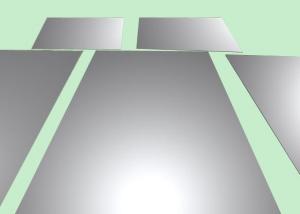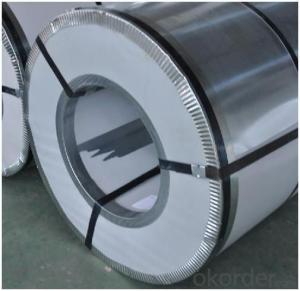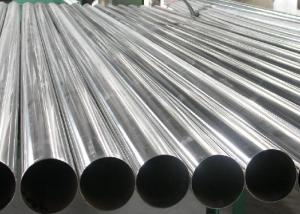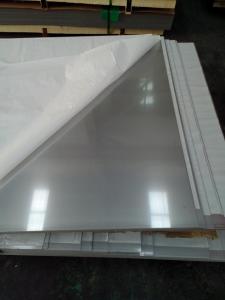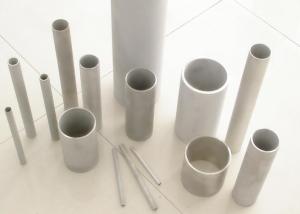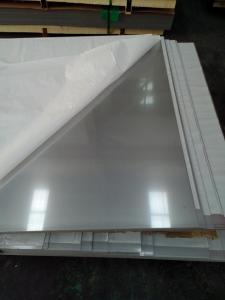Stainless Steel Sheets AISI 304 Price With Good Quality
- Loading Port:
- China main port
- Payment Terms:
- TT OR LC
- Min Order Qty:
- 20 m.t.
- Supply Capability:
- 2000000 m.t./month
OKorder Service Pledge
OKorder Financial Service
You Might Also Like
Specification
Products Description for Stainless Steel Coils/Sheets:
Name: stainless steel coils/plates/sheets
Discharge Port: Any Port, China
Cold Rolled Size: Thickness0.3-8mm,Width:280-2100mm
Hot Rolled Size: Thickness3-14mm,Width:650-2100mm
Hot Rolled/Cold Rolled Plates : Thickness2-80mm,Width:1500-3000mm
Coil Weight: About 20 Tons
Grade: 201,202,304/304L/304H, 316/316L/316H, 409/L,430 etc.
Technique: Hot Rolled/Cold Rolled
Finish:2B, BA, 2D, No1, No2 etc
Edge: Mill Edge / Slitting Edge
Packaging: In bundles, or as customer's requirement
Place of Origin: Made in China
MOQ: 20 Tons
Payment Terms: 100% LC at sight, or 100%TT in advance
Delivery Time: With 30-40 days after deposit
Description for Stainless Steel Coils/Sheets:
Article | 304 cold rolled stainless steel coil |
Surface | 2b, No.1 |
type | coil |
Thickness | 0.3-8mm |
Usage | construction, machine building, container manufaturing, shipbuilding, chemical industry, kitchen decoration |
Parking | kraft paper wooden packing or as your requirement |
Payment | Small quantity (within total $2000.00) T/T at sight, 30% in advance , 70% after receiving the B/L copy. Large quantity L/C at sight. |
Delivery Time | 30-40 days after received the deposit |
Features of Stainless Steel Coils
(1)Good ductility
(2)Good corrosion resistance
(3)Excellent abrasion resistance and fatigue strength
(4)Good weldability
(5)Oxidation resistant performance
(6)Excellent in high temperature
Detail picture for Stainless Steel Coils/Sheets
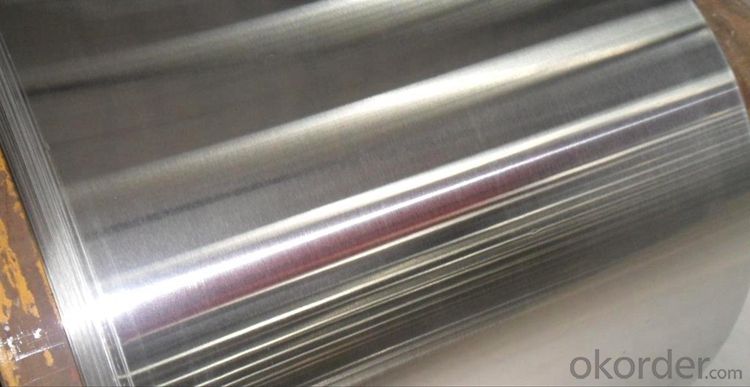
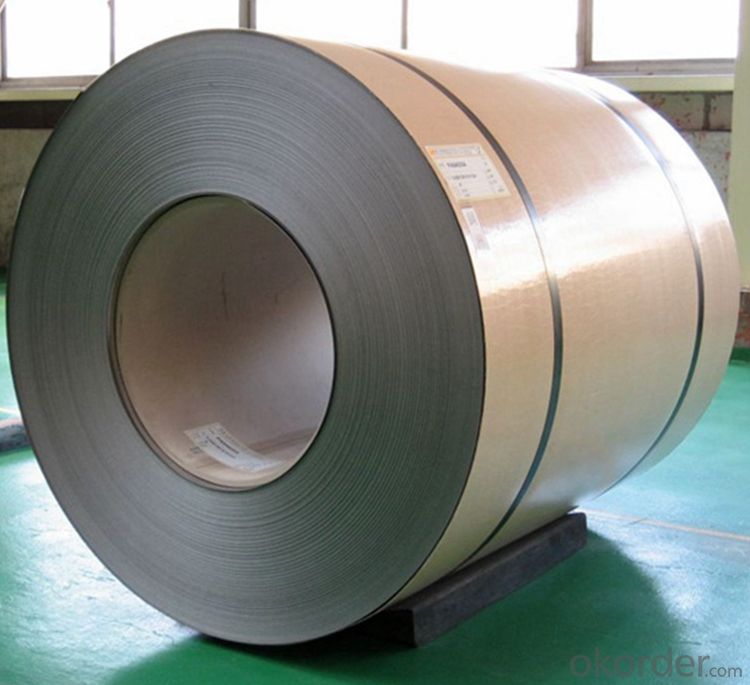
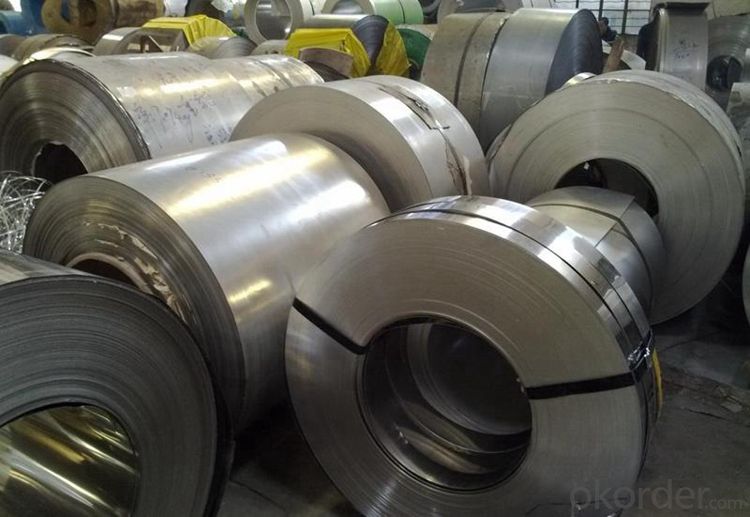
Packaging & Delivery for Stainless Steel Coils/Sheets:
Packaging Detail | Standard export packing or following customer's demand |
Delivery Time | Within 30-40 days after deposit or according to the order quantity |
FAQ for Stainless Steel Coils/Sheets:
Q:What are the advantages of your company ?
A: We have many professionals, technical personnel, more competitive prices and best after-dales service than other stainless steel companies.
Q:Can you arrange the shipment ?
A: Sure we can help you with the shipment. We have forwarders who have cooperated with us for many years.
- Q: Can stainless steel sheets be used for outdoor sculptures?
- Indeed, outdoor sculptures can make use of stainless steel sheets. Due to its remarkable resistance to corrosion, stainless steel is exceptionally suitable for outdoor scenarios where sculptures are subjected to diverse weather conditions. It can endure rain, snow, heat, and UV radiation without compromising its strength or deteriorating. Moreover, stainless steel boasts a sleek and contemporary appearance that can augment the sculpture's visual impact. Its robustness and ability to repel rust render it a favored selection for outdoor sculptures found in parks, gardens, and public areas.
- Q: How do you bend stainless steel sheets?
- To effectively bend stainless steel sheets, a combination of skill, knowledge, and the right tools is necessary. Follow these steps for successful bending: 1. Identify the specific grade of stainless steel you are working with as each grade possesses unique characteristics affecting malleability and bending response. 2. Prior to bending, ensure the stainless steel sheet is clean and devoid of any dirt or debris. Use a mild detergent and a soft cloth for surface cleaning. 3. Mark the precise bending line by measuring and indicating the desired spot. Utilize a ruler or straight edge for accuracy. 4. Select an appropriate bending tool based on the size and thickness of the stainless steel sheet. Options include a press brake, rolling machine, or bending machine. 5. Gradually apply pressure by placing the stainless steel sheet in the bending tool, aligning it with the marked bending line. Avoid excessive force to prevent cracking or deformation. 6. Adjust the bending angle as needed by repositioning the stainless steel sheet within the bending tool. Utilize the tool's adjustments or supplementary tools like clamps for precise angles. 7. Inspect the result by carefully removing the stainless steel sheet from the bending tool. Check for defects, cracks, or unevenness. Minor adjustments can be made using a rubber mallet or a hammer with a soft face. Keep in mind that bending stainless steel sheets requires practice and precision. Begin with smaller projects and gradually advance to more complex bends. If uncertain or lacking experience, consult a professional in metal fabrication for the best outcomes.
- Q: Are stainless steel sheets suitable for architectural column covers or cladding?
- Yes, stainless steel sheets are suitable for architectural column covers or cladding. Stainless steel is known for its durability, corrosion resistance, and aesthetic appeal, making it an excellent choice for exterior applications. It can withstand harsh weather conditions, maintain its appearance over time, and provide a sleek and modern look to architectural structures. Additionally, stainless steel sheets offer versatility in terms of finishes, patterns, and colors, allowing architects and designers to create unique and visually appealing column covers or cladding designs.
- Q: What are the benefits of using embossed stainless steel sheets in elevator interiors?
- Embossed stainless steel sheets offer numerous advantages when used in elevator interiors. To begin with, the incorporation of embossed stainless steel sheets brings an element of elegance and sophistication to the elevator's overall design. The visually appealing embossed patterns on the surface enhance the aesthetic appeal of the interior space, making it particularly desirable in upscale residential complexes and commercial buildings where a luxurious ambiance is sought after. Moreover, these sheets are highly durable and resistant to wear and tear, making them an ideal choice for elevator interiors. Given the constant use and potential for scratches, dents, and other damages, the embossed pattern on the stainless steel surface helps conceal minor imperfections, ensuring that the interior maintains its pristine appearance for an extended period. Additionally, stainless steel's corrosion resistance makes it suitable for environments with high humidity levels, such as elevator shafts. Furthermore, maintaining and cleaning embossed stainless steel sheets is a breeze. Elevator interiors are often exposed to dirt, fingerprints, and other stains. However, the smooth surface of embossed stainless steel allows for easy wiping, ensuring that the interior always appears clean and well-maintained. This aspect is particularly crucial in public spaces where cleanliness plays a significant role in creating a positive impression on users. Additionally, embossed stainless steel sheets offer a high level of customization. They can be manufactured in various patterns, textures, and finishes, providing endless design possibilities. This versatility allows architects and designers to create unique and personalized elevator interiors that align with the desired theme or branding of a building. Furthermore, embossed stainless steel can easily be matched with other interior design elements, including flooring, lighting fixtures, and wall coverings. In conclusion, the utilization of embossed stainless steel sheets in elevator interiors provides numerous benefits. These advantages include heightened visual appeal, durability, ease of maintenance, and customization options. These qualities make embossed stainless steel an ideal material for elevators in various settings, from commercial buildings to residential complexes, thereby enhancing the overall design and adding value and elegance.
- Q: Can stainless steel sheets be welded?
- Yes, stainless steel sheets can be welded.
- Q: How do you prevent galvanic corrosion when using stainless steel sheets?
- One effective method to prevent galvanic corrosion when using stainless steel sheets is to ensure they are not in direct contact with dissimilar metals. This can be achieved by using insulating materials or coatings, such as rubber gaskets or paint, between the stainless steel sheets and other metals. Additionally, regular maintenance and cleaning of the stainless steel surfaces can help prevent the accumulation of corrosive substances that could lead to galvanic corrosion.
- Q: What are the standard dimensions for stainless steel sheets?
- The dimensions of stainless steel sheets differ based on the type and grade of stainless steel utilized. Nevertheless, there exist some widely available common sizes in the market. Typically, the standard width for most stainless steel sheets falls within the range of 36 to 48 inches, while the length can vary between 72 to 120 inches. These dimensions are commonly employed in construction, automotive, and manufacturing applications. The thickness of stainless steel sheets can also vary, with common choices ranging from 0.024 to 0.1875 inches. Thinner sheets are often used for decorative or lightweight purposes, whereas thicker sheets are utilized for heavy-duty applications requiring enhanced strength and durability. It is essential to note that these dimensions are general guidelines and may differ depending on specific project requirements. Moreover, custom sizes can be manufactured to meet the unique needs of a particular application. Overall, the standard dimensions for stainless steel sheets provide a range of options suitable for diverse industries and purposes. This ensures flexibility in selecting the appropriate size for a specific project.
- Q: Can stainless steel sheets be used for pressure vessels?
- Yes, stainless steel sheets can be used for pressure vessels. Stainless steel is known for its excellent corrosion resistance, which makes it an ideal material for pressure vessels that are exposed to harsh environments or corrosive substances. It also has high strength and good mechanical properties, allowing it to withstand the internal pressure exerted by the fluid or gas inside the vessel. Additionally, stainless steel sheets can be easily formed and welded to create the desired shape and size of the pressure vessel. Overall, stainless steel sheets are a popular choice for pressure vessels in various industries such as oil and gas, chemical processing, and pharmaceuticals.
- Q: What are the advantages of using stainless steel sheets in the aerospace industry?
- Using stainless steel sheets in the aerospace industry has several advantages. Firstly, stainless steel is renowned for its remarkable strength and durability. It can endure high temperatures and extreme conditions, making it perfect for aircraft components that require superior performance and long lifespan. This strength allows stainless steel sheets to resist corrosion, which is crucial in an industry where safety is paramount. Secondly, stainless steel sheets offer excellent resistance to impact and fatigue. This is particularly important in the aerospace sector, where components are constantly subjected to vibrations and stress. Stainless steel can absorb these forces without compromising its structural integrity, ensuring the safety and reliability of the aircraft. Thirdly, stainless steel sheets possess a high strength-to-weight ratio, making them lightweight yet strong. This is essential in aviation, where reducing weight is a primary concern for fuel efficiency and overall performance. By utilizing stainless steel sheets, aircraft manufacturers can achieve the desired strength without adding unnecessary weight, leading to improved fuel economy and increased payload capacity. Furthermore, stainless steel sheets are highly versatile. They can be easily formed, welded, and machined into intricate shapes and sizes, allowing for the production of complex aerospace components. This versatility enables engineers to design and manufacture innovative aircraft parts, resulting in improved aerodynamics, reduced drag, and enhanced overall performance. Lastly, stainless steel sheets exhibit excellent heat resistance properties. They can endure high temperatures without losing their strength or shape, making them ideal for applications that involve exposure to extreme heat, such as jet engines or exhaust systems. This heat resistance ensures the longevity and reliability of these critical components, contributing to the overall safety and efficiency of aircraft. In conclusion, the advantages of using stainless steel sheets in the aerospace industry include exceptional strength and durability, resistance to impact and fatigue, high strength-to-weight ratio, versatility in manufacturing complex components, and excellent heat resistance properties. These qualities make stainless steel sheets an optimal choice for aircraft manufacturers, guaranteeing the safety, reliability, and efficiency of aerospace vehicles.
- Q: What are the different types of patterned finishes available for stainless steel sheets?
- There are several different types of patterned finishes available for stainless steel sheets, each offering a unique aesthetic and functionality. Some of the most common patterned finishes include: 1. Diamond: This pattern features a raised diamond-shaped texture on the surface of the stainless steel sheet. It provides enhanced grip and is commonly used in applications where slip resistance is important, such as flooring or industrial equipment. 2. Linen: The linen finish is characterized by a textured pattern that resembles woven fabric. It adds a subtle elegance to stainless steel sheets and is often used in interior design applications, such as wall cladding or decorative panels. 3. Checkered: This pattern consists of a grid of raised squares or rectangles, giving the stainless steel sheet a checkerboard-like appearance. The checkered finish is often used for decorative purposes, as it adds visual interest and can create a retro or industrial look. 4. Bead Blasted: In this finish, the stainless steel sheet is blasted with fine glass beads to create a matte texture with a slightly rough surface. Bead blasted finishes are commonly used in architectural applications, as they provide a modern and uniform appearance while reducing glare and fingerprints. 5. Etched: Etched finishes involve chemically altering the surface of the stainless steel sheet to create intricate patterns or designs. This process can achieve a wide range of effects, from simple line patterns to complex images. Etched finishes are often used in decorative applications, such as signage, artwork, or custom designs. 6. Sandblasted: Similar to bead blasting, sandblasting involves using high-pressure sand or other abrasive materials to create a textured surface on the stainless steel sheet. This finish provides a rougher and more pronounced pattern compared to bead blasting, making it suitable for applications that require a more industrial or rugged appearance. 7. Mirror: While not technically a patterned finish, the mirror finish is worth mentioning as it is a popular choice for stainless steel sheets. This finish is achieved through a series of polishing and buffing processes, resulting in a highly reflective surface that resembles a mirror. The mirror finish is commonly used in architectural elements, such as cladding, decorative accents, or reflective surfaces. Overall, the choice of patterned finish for stainless steel sheets depends on the desired aesthetic, functionality, and specific application requirements. Each pattern offers a distinct look and texture, allowing for endless possibilities in design.
Send your message to us
Stainless Steel Sheets AISI 304 Price With Good Quality
- Loading Port:
- China main port
- Payment Terms:
- TT OR LC
- Min Order Qty:
- 20 m.t.
- Supply Capability:
- 2000000 m.t./month
OKorder Service Pledge
OKorder Financial Service
Similar products
Hot products
Hot Searches
Related keywords
